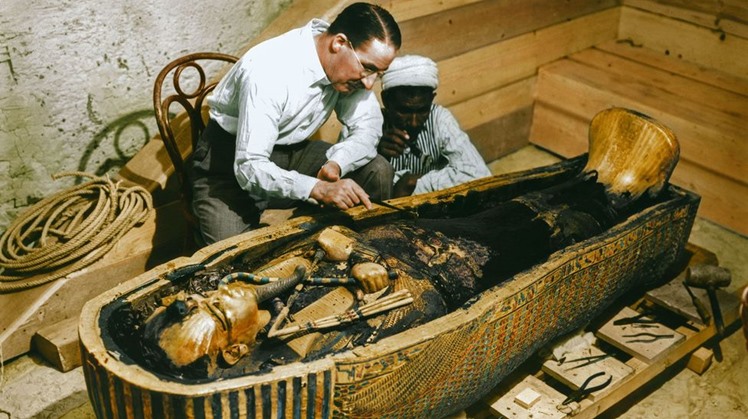In the century since the discovery of Tutankhamun's tomb in the Valley of the Kings in 1922, the golden death mask of the pharaoh has become a symbol of ancient Egypt, celebrated around the world as an ancient masterpiece, seen by millions of people, both in Cairo and as part of Traveling exhibitions, scrutinized and analyzed, however researchers continue to discover new about its history, here are four things you might not have known about one of the most famous artifacts in the world, according to ArtNews Paper.
Desert gold and lapis lazuli
The gold used to make Tutankhamun's mask 3,300 years ago was brought to the palace workshop either from the eastern desert of Egypt or Nubia, the resource-rich region of southern Egypt, where workers toil in the desert heat, gathering pieces of quartzite to free tiny shards of gold. By transporting the sand, once they have collected enough gold, it is shaped into ingots and sent to the artisans. Lapis lazuli, which is used to shape the mask's eyebrows and eye make-up, came from much further afield: the Badakhshan Mountains in Afghanistan. To reach the lapis lazuli, the miners piled the wood on the rock face and set it on fire, then threw water on the wall, which cooled and cracked, and exposed the lapis lazuli. Ending in Egypt, often as a gift from the Babylonian king, other mask gems were collected in the deserts on both sides of the Nile Valley, while the disciples of obsidian probably came from Ethiopia.
Was it made for someone else?
A recent analysis of the mask's construction by Egyptologist Nicholas Reeves indicates that the section of his face, which is a perfect portrait of a young Tutankhamun, has superseded an earlier one. If this is the case, then the mask originally belonged to someone else. The most likely candidate is King Neferneferu, who appears to have been the ancestor of Tutankhamun. A number of Neferneferu-Aten's funerary goods have been adapted for the use of Tutankhamun. Interestingly, one of the mask cartouches - the long ovals containing two of the five names of the pharaoh Changed to Tutankhamun from Neferneferu Aten.
Damaged mummy
Although embalmers and priests in Egypt treated royal mummies with the utmost care and respect, accidents still occurred. One corner of the mask's headdress reveals ancient damage, and Reeves suggests that Tutankhamun's mummy may have fallen during funeral ceremonies, perhaps when priests stood it upright for ritual performances. British archaeologist and Egyptologist Howard Carter, discoverer of Tutankhamun's tomb, unearthed pieces of gold belts, originally wrapped around the mummy, in the room and the corridor outside the burial chamber, while the eagle on top of the mask mysteriously lost its eye.
Hot knives and paraffin lamps
During Tutankhamun's funeral, priests poured large amounts of resin on his mummy, so that when it solidified, the body and the golden mask he wore were left on the sarcophagus. To free them, Carter resorted to dangerous measures. First, he and his team dismembered Tutankhamun, making it easy for them to remove the king's body parts and reassemble them on a tray. But the golden mask - and Tutankhamun's severed head - remained in place. Carter used hot knives to melt the resin holding Tutankhamun's head inside the mask, after which he hung the coffin upside down over paraffin lamps to release the mask itself. This melted the resin, but also loosened many of the mask gaskets, causing them to fall out of place. Carter had to spend days getting it back to normal.
 Wed, Nov. 2, 2022
Wed, Nov. 2, 2022